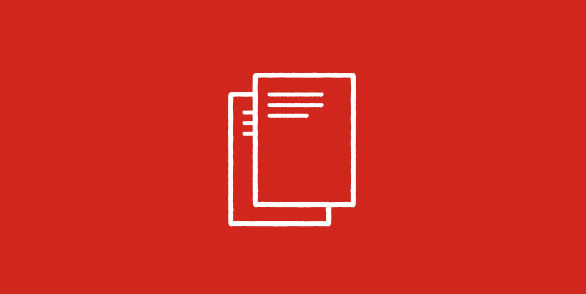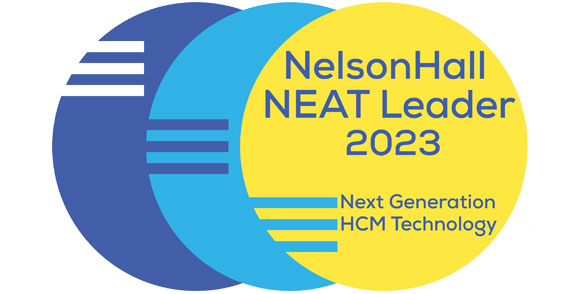The COVID-19 pandemic shows no signs of going away anytime soon, but within the difficulties it presents are also opportunities for businesses. In this article, we look at the main human capital management challenges facing organisations in 2022, and how the right HCM solution could help your teams to turn these difficulties around.
1. Redefining employee visibility
As we have seen since the pandemic began, COVID-19 brought a rapid wholesale shift to remote and flexible working. With the continued rise of hybrid forms of working (onsite, remote working and a combination of both), employers will increasingly need to understand their workforce, wherever their location. ADP’s research discovered that 75% of the global workforce made changes, or plan to change, how or where they live as a result of the upheaval inflicted by the pandemic. This rises to 85 percent of 18-to-24-year-olds.[1]
While some businesses can successfully operate virtually, most of those that quickly moved to remote operations have now shifted towards hybrid frameworks. As staff can now work from a variety of locations, how can organisations redefine what it means to be visible in the workplace? Plus, what are the implications of this shift?
Enabling greater connection
To foster connection when not all employees are together onsite at any one time, employers will rely on in-depth HR data for better insights into staff engagement and performance. Using an integrated HCM system with a full view of key employee data, managers can better support their hybrid teams, developing a culture of respect, connection and mutual trust, all of which are key in attracting and keeping talent. For instance, ADP’s research found that US employees who trust their colleagues and managers are seven times more likely to feel ‘strongly connected’ to their organisation.[2]
Growing a highly engaged yet dispersed workforce will be vital, moving forward. Creating this culture of connection comes down to employers acknowledging the wants and needs of their people. As Don Weinstein, ADP’s corporate vice president of global product and technology puts it: ‘Amid all the change, one thread has only grown stronger: people power performance.’[3]
2. Re-evaluating purpose
The fallout from the pandemic saw 28 percent of workers lose their jobs while 23 percent took a pay cut.[4] With these and other seismic changes forcing people to re-evaluate their priorities, staff now need to feel a sense of purpose in their work. ADP found that US workers who feel strongly connected to their employers are 75 times more likely to be fully engaged, compared with those who feel no sense of connection.[5] This all-important connection driving purpose and engagement will become a measurement of workforce culture.
So how can your HR teams develop this sense of purposeful engagement? Embrace people-based initiatives to build a workplace where everyone can thrive. Flexible work models can help working parents and women, as well as manage the labour shortage.[6] This is particularly relevant when you consider that millions of women have left the workforce during the pandemic.[7] Plus, 15 percent of working parents reported that, due to the pandemic’s impact forcing them to choose between work and personal responsibilities, they or someone in their household had to stop working.[8] While we’re talking about keeping staff engaged, 28 percent of workers reported taking on a new role, or changing job role, due to changes in their company. So HR programmes that reskill or upskill employees will be appreciated and timely.[9]
As part of this focus on people-centred initiatives, organisations can’t afford to underestimate the need for more diversity, equity and inclusion to drive measurable progress. Using HCM allows companies to gain powerful insights on their workforce and transparently monitor themselves, a vital part of this cultural transformation.
3. Data powering resilience
With the hybrid model here to stay, businesses face ever-increasing compliance and regulatory challenges when managing, recruiting or keeping staff. According to ADP research, 70 percent of businesses feel unprepared for major regulatory change.[10] This number can only increase whenever the pandemic is finally on its way out and return-to-work initiatives evolve as a result. Something to consider as part of this operational challenge: how are your teams accessing up-to-date staff information on COVID testing and vaccine tracking?
The answer for businesses is access to real-time, reliable HCM data to power informed decisions and meet compliance expectations, while ensuring your people feel safe onsite. Companies will increasingly turn to technology to help them drive efficiency, grow locally and globally, and eliminate routine admin tasks. Self-service tools are on the rise, with staff able to edit address or bank details and monitor their payslips, for example. The cumulative effect of this removal of HR admin tasks will enable those teams to focus more on strategic growth initiatives, while staff seek greater flexibility and to take back control from their employers.
4. Innovation driving change
As the shape of the workplace changes rapidly, employers must keep up. Skills-based hiring will surge as staff seek to broaden their skills to help maximise their employment chances. ADP’s research revealed that, as a result of the pandemic, one in seven workers are actively trying to enter industries they consider more ‘future proof’.[11] Employers can help keep staff engaged with customised, online opportunities for continued professional development. Meanwhile, using HCM solutions, business reaps the benefits of greater innovation among teams as they apply their skills-based learning. Relying on technologies such as machine learning will also help companies to identify employees with the right skills, such as pools of former applicants who applied for other roles.
The future is flexible
To succeed post-pandemic, businesses must recognise the power of their people, acknowledge their need for flexible work practices and harness data-driven HCM insights to power strategic decision-making.
Can we help?
For over 70 years, at ADP we’ve pioneered some world firsts in HR and payroll: the first global cloud human capital management (HCM) solution, the first HCM mobile solution and the first online HR marketplace for new, easily integrated HR solutions. We now provide the latest HR and payroll solutions to 1,000,000 clients in over 140 countries.
If you’d like to talk to an ADP expert about the benefits of outsourcing your HR services to ADP, please get in touch.
[1] ADP: People at Work 2021: A Global Workforce View, p 5.
[2] Measuring the I in DEI - ADP Research Institute (adpri.org)
[3] www.multivu.com/players/English/8978151-adp-2022-workers-will-define-future-of-work/
[4] ADP: People at Work 2021: A Global Workforce View, p 4.
[5] R0160_1021_v1_DEI_ResearchReport.pdf (adpri.org) p 19.
[6] Video on Quartz Network with ADP Chief Technologist, Urvashi Tyagi on ‘what’s to come in 2022’.
[7] Video on Quartz Network with ADP Chief Technologist, Urvashi Tyagi on ‘what’s to come in 2022’.
[8] ADP: People at Work 2021: A Global Workforce View, p 5.
[9] ADP: People at Work 2021: A Global Workforce View, p 5.
[10] ADP: Take a new look at pay – The potential of payroll: Global payroll survey 2021, p 7.
[11] ADP: People at Work 2021: A Global Workforce View, p 5.



